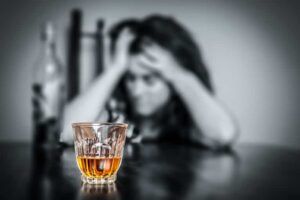 When the state of Colorado legalized marijuana in 2013, they opened the door to the possibility of an increase in drug-related crashes, injuries, and deaths. But what they might not have realized at the time is that alcohol was going to continue to pose a far greater danger to the people of Colorado and other mountain states.
When the state of Colorado legalized marijuana in 2013, they opened the door to the possibility of an increase in drug-related crashes, injuries, and deaths. But what they might not have realized at the time is that alcohol was going to continue to pose a far greater danger to the people of Colorado and other mountain states.
A study released last year from the Centers for Disease Control and Prevention (CDC) shows that these areas have the highest alcohol-related death rates in the country. In the report, the CDC looked at 54 different causes of death linked to alcohol consumption including motor vehicle crashes, binge-drinking, violence, and alcohol poisoning. Colorado and it’s neighboring states logged some of the most alcohol-related fatalities, coming in several points higher than the national average of 1 in 10 alcohol-related deaths.
Take Colorado’s motor vehicle crash statistics as an example of how alcohol is killing people in the state – according to Mothers Against Drunk Driving (MADD), there were 142 alcohol-related traffic deaths in Colorado in the past year, and that number was up by 6% from the year before. To fight back against the number of drunk driving deaths, lawmakers have passed an all offender ignition interlock law and they now allow a shorter license suspension period for those people who opt to immediately install an ignition interlock after a driving under the influence (DUI) conviction.
The CDC’s findings that excessive drinking is one of the leading causes of premature death for working-age adults is disturbing, especially in states like Colorado where people are literally drinking themselves to death. They recommend all states try to curb alcohol-related deaths by going straight to the source – regulating alcohol stores and increasing state alcohol taxes, so purchasing that bottle of beer or wine becomes harder for those who want to drink it.